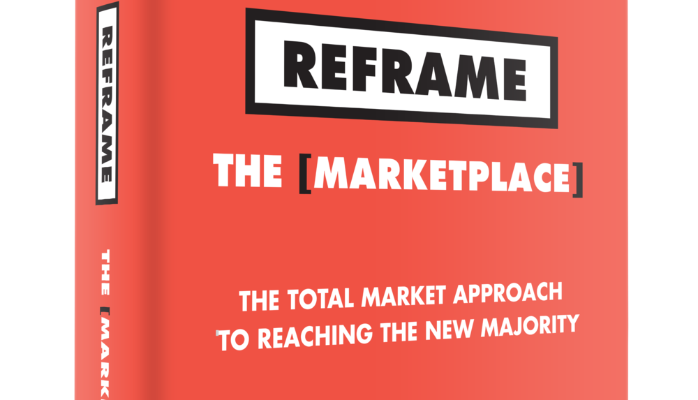REFRAME’S Ideal Process for Total Market (Still doesn’t feel like it benefits everyone)
Original article featured on LinkedIN
The idea of total market frustrates me. And I am not alone in this frustration.
There are many of us who’ve lived and built our careers in multicultural marketing, and yet, we are struggling to understand the “business” of Total Market – what Total Market (really) is and isn’t, and more importantly, how ethnic marketers and segments can win in this new era of Total Market.
Jeffrey L. Bowman (@jeffreylbowman) and contributor Jeremy Katz, in their recent book, Reframe The Marketplace – The Total Market Approach to Reaching the New Majority attempts to present a winning process that will help marketers seize opportunities with dynamically growing ethnic groups and LGBTs together with the current majority white population – in other words, The New America.
Yeah, we’ve heard this before but right away, Bowman goes all-in on marketers for not (ever) adequately supporting and investing in multicultural marketing. Instead of simply glossing over things, Bowman provides a blow-by-blow account of the numerous hits that multicultural marketing withstood since its inception. It is a frank picture of how marketers have failed to leverage multicultural marketing for their advantage.
This is a pleasant surprise.
I also like how he includes in this process, the steps towards correcting this. He lists out the elements/needs/requirements for connecting with The New America:
- an enterprise maturation model that tell marketers how New America they really are)
- senior management buy-in
- the importance of staffing with diverse talent
- having realistic budgets
- investing in relevant research, etc.
None of these, though, are new news to the industry. For years, multicultural marketers have been pushing and pushing out these requests to no avail. So, it’s important to see them reiterated in Bowman’s Total Market discussion. It provides insights and context around the current dismantling of multicultural marketing.
Bowman’s big Total Market idea for better connecting with and engaging The New America is more about “organizational change and education and less about marketing”. So, he recommends that all marketers convert their businesses to a Total Market Enterprise, where each would adapt the above requirements over time.
This is where he loses me a bit.
I respect Bowman for putting in the hours and thought toward this idealistic approach, but rose-colored glasses have also blurred Bowman’s vision from a few potential hiccups. I get the ideal side to converting to TMEs but I struggle with understanding the upside of this process, especially for those of us in the multicultural space. Jeff, my friend, I don’t believe there will be an equal distribution of opportunities and power.
First, the big boys with the money and resources are the likely candidates for this transformation. They have the dollars to staff, train, plan, and ready themselves for the next big New America opportunity.
Second, how will smaller, newly converted, TME businesses, that are the experts and keepers of deep insights and long-term relationships with specific multicultural groups, by the way, compete with these new large TME businesses? What becomes of great businesses like BET, Essence, Ebony, Burrell, Lattimer Communications, Univsion, Red Brown Kle’, The IW Group, Walton-Isaacson and The Hunter-Miller Group? Bowman accepts the challenge and this question and said this during an interview with him for this review:
“I too do not believe there will be equal placement. What I do advocate is prioritization of assets, which in turn grow the pie for ethnic dollars for the workplace and the marketplace.”
I appreciate the optimistic tone of the book, yet, as an advocate of marketers recognizing and speaking to various segments with deep insights, REFRAME has not done enough to allay my concerns.
I do, however, recommend this book for all marketers, especially multicultural marketers. We can’t be in the dark about Total Market. REFRAME, at the very least, helps us understand where Total Market is today, its future and how each of us can have a voice in the process.
Let’s continue the conversation.



